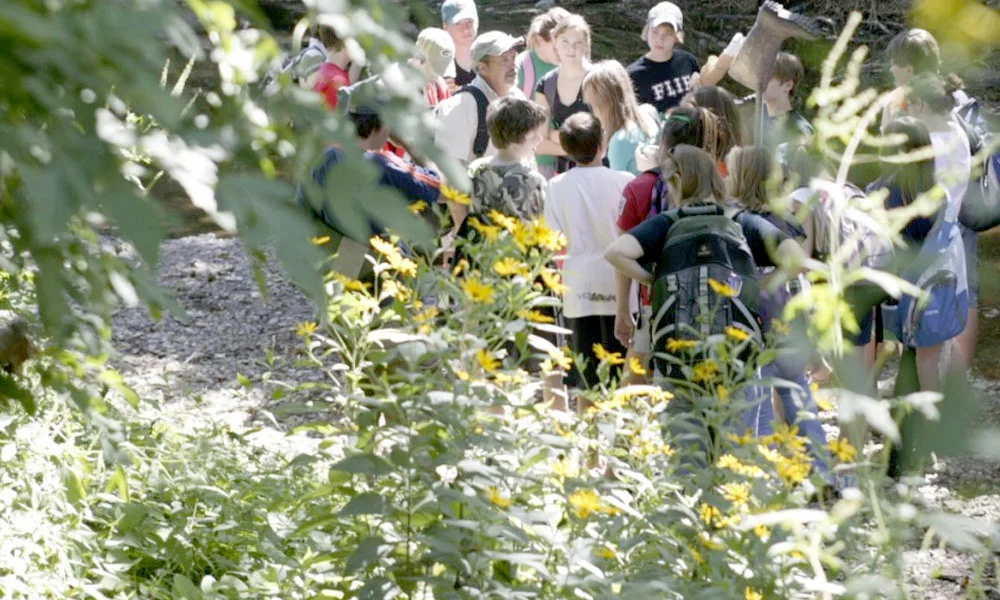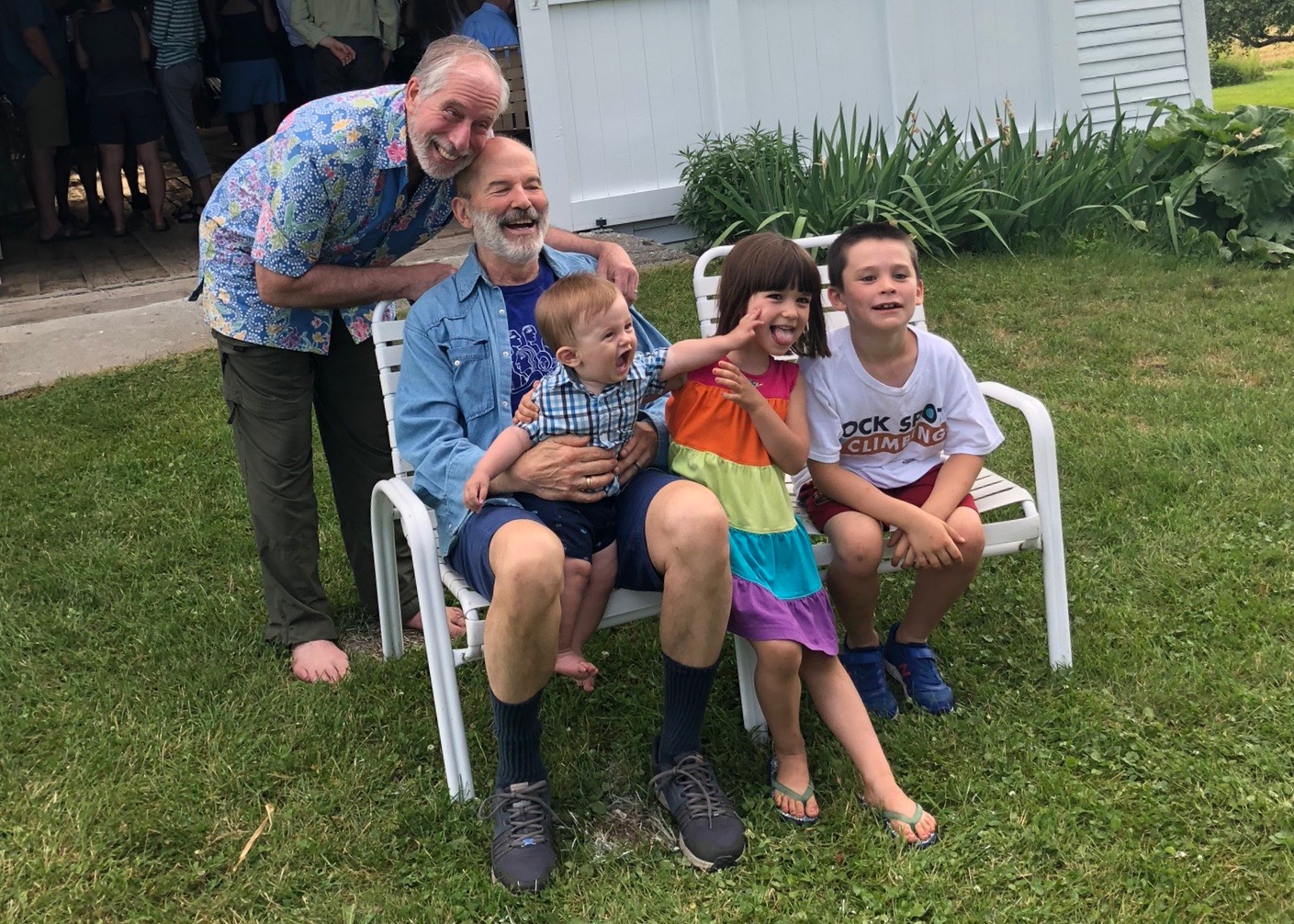Cadwell Family Reunion in Maine, 2016
We have had a wonderful summer and a hard summer. We have savored beautiful moments with our sons, daughters-in-law, and grandchildren over the July holiday and in Maine. Sun kissed, sparkling, green mountains in Vermont and sails on the shining sea and mountain hikes in Acadia. And precious time together.
All the while, Ashley’s brother, Steve, had brain cancer and declined steadily since we were with the extended family in July. Steve was at home in hospice care surrounded by loved ones until August 29th when he died peacefully. Ashley is one of 6 brothers and they are a close and lively clan. Observing them together and being a part of their family is a privilege. They all gathered round to help and love their brother in every way possible.
Steve was a therapist, married to Joe, father to Isaac, beloved writer, poet, composer, musician, director, performer, community member, activist. He was a force of life undaunted. He has taught us all to be more fully alive, who we are, and comfortable in our very own skin. On Steve’s website he writes, “I empower all my clients (gay and otherwise) to discover their own power to be different, to claim their pride in their difference in order to make a difference in the order of things.”
Cadwell Brothers (wearing sweaters and shirts made by their mother), with their Parents, circa 2005
Last May, all of Steve’s brothers, Joe, Isaac, and other family were present when he received a life time achievement award from the Northeastern Society for Group Psychotherapy. Steve was one of the pioneers of group therapy with AIDS patients and care givers. He co-edited a book on psychotherapy about gay men in the age of AIDS.
A few weeks ago, August 23-26, the 5th annual Middlebury New Film Makers Festival was held. Last year at this time, Steve’s film, “Wild and Precious,” was featured at this festival followed by a panel discussion including Steve and associate producers, Tommy Hyde and Bjorn Anders Peterson. “Wild and Precious” was filmed at the farm where Steve and his 5 brothers grew up and it is about growing up gay in the 60’s and 70’s. It is beautiful and real and heart breaking. In its first iteration, the film was a one man show. You can see it here as Steve performs it at his alma mater.
Steve wrote 2 poem memoirs. The first is the basis for his show and film, “Wild and Precious.” The second, poeMEMoir, Volume 2, Hope Springs Internal, Steve wrote after he was diagnosed with cancer in April, 2018.
Steve and Joe with our grandchildren, July, 2019
I will always remember Steve sitting at the grand piano that a neighbor gave him, in the barn in Vermont where he grew up, last July, playing his own music for the gathered family, reading his poetry and celebrating all of life and all of us. At a recent memorial service someone said…our lives are like fireworks, we are launched, we explode and send our colors and fire across the sky, and our sparks continue to rain down on everyone after we are gone. At Steve’s memorial service last Sunday, Rabbi Darby said, “Steve was not just a flame. He lived as a splendid, fiery, colorful display of fireworks. Those of us who have seen and witnessed the beauty, color, and energy of such fireworks are forever changed.” Steven Allen Cadwell will always be a force of creativity, courage, play, joy, and love. May we all embrace the force of life as Steve Cadwell has. May we all be fireworks in the course of our one wild and precious life. May his memory be for us a blessing.
from Radical Acceptance: Faith; Amazing Grace
by Steven Allen Cadwell
“WE’VE HAD SUCH FUN!”
ENTRHALLED with The Other.
Holding the other’s gaze; holding connection which trauma only temporarily
interrupts. Reconnect. Sustain Contact. Respond. Receive.
Return again and again.
Over and over practicing recovery in Love.
The center holds. The core Self.
Amazing Grace. Bless Sings out about
the constant internalized object made subject.
for the mindful mind’s eye:
“I.I.I.” to “Thou. Thou. Thou.”
The Eyes have it and How! Wow!
Raise them up heavenwards singing.
Praise be! Blessed be!
Hallowed be I and Thou Named.
Our little Kingdoms come and go.
LOVE Will Be for Now and Forevermore.
Last Rites of Passage And Testaments.
For the Love of Life.
stV be Leave, see you again real soon.
poeMEMoir, Volume 2, Hope Springs Internal. performance, June, 2019
















